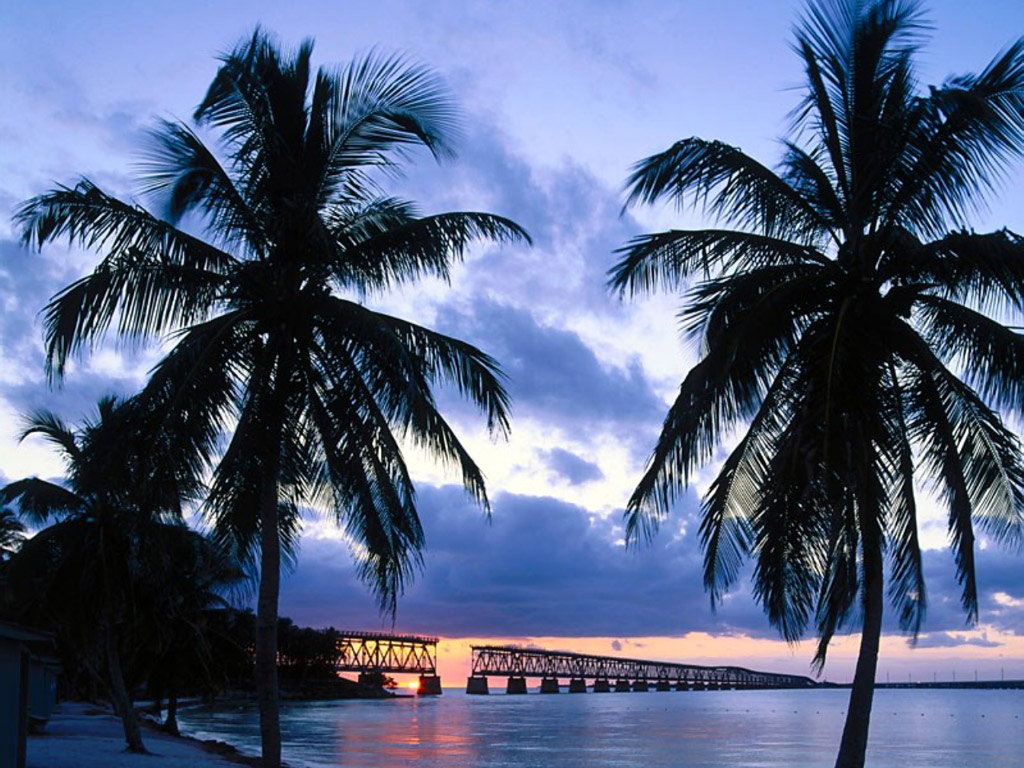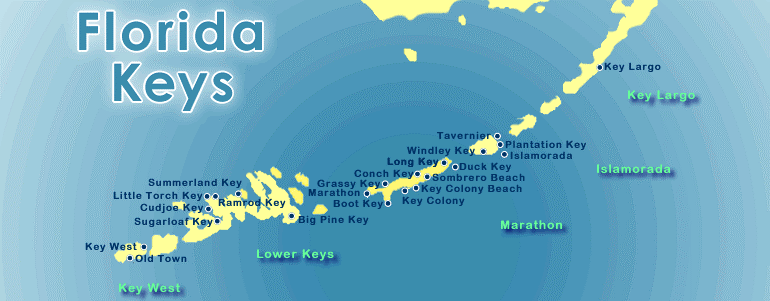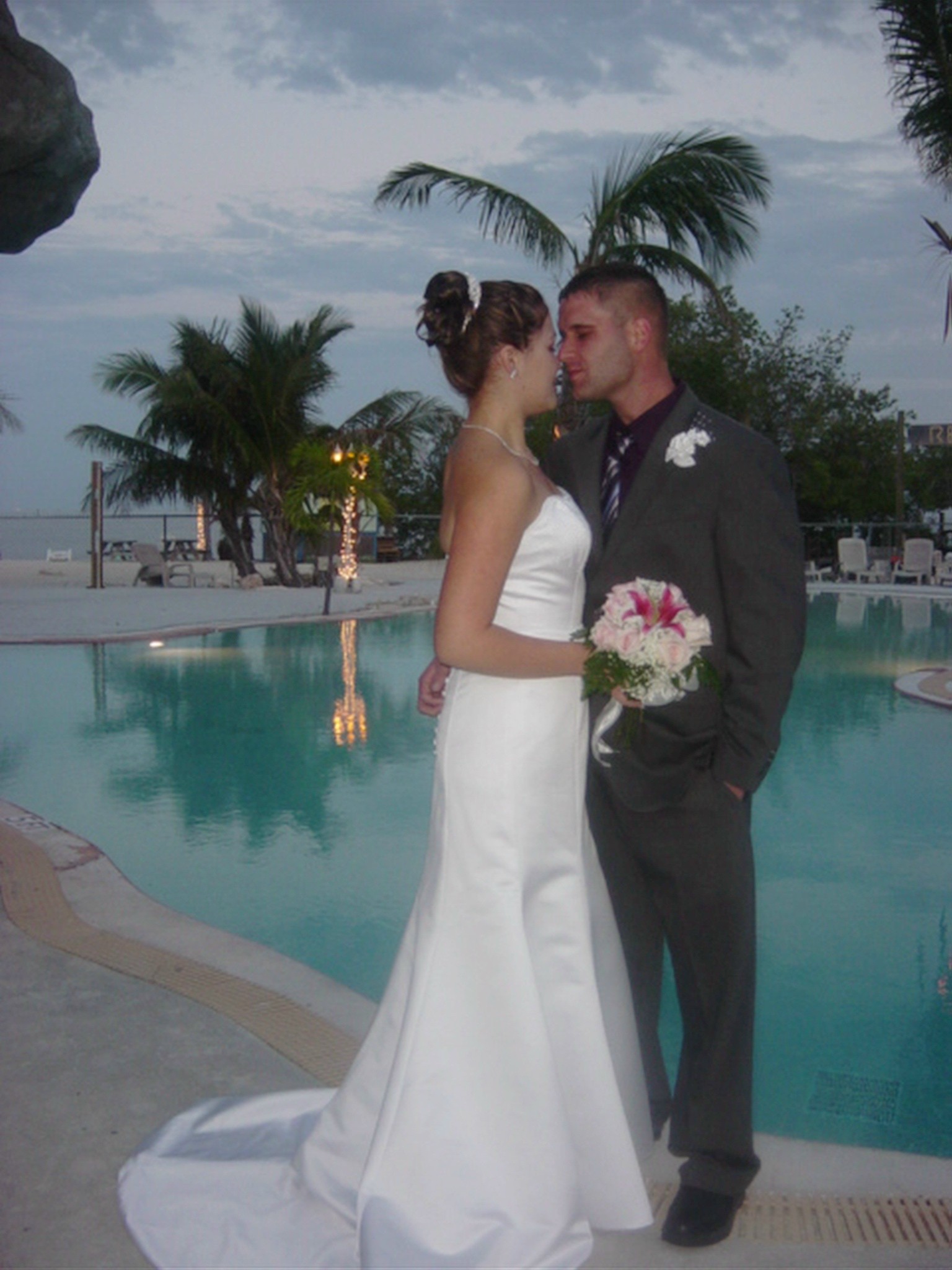The Islands of The Florida Keys
|
|
 The Florida Keys are a cluster of about 1700
islands in the southeast United States. They begin at the southeastern tip of the Florida
peninsula, about 15 miles (24 km) south of Miami, and extend in a gentle arc south-southwest
and then westward to Key West, the westernmost of the inhabited islands, and on to the
uninhabited Dry Tortugas. The islands lie along the Florida Straits, dividing the Atlantic
Ocean to the east from the Gulf of Mexico to the west, and defining one edge of Florida Bay.
At the nearest point, the southern tip of Key West is just 90 miles (140 km) from Cuba. The Florida Keys are a cluster of about 1700
islands in the southeast United States. They begin at the southeastern tip of the Florida
peninsula, about 15 miles (24 km) south of Miami, and extend in a gentle arc south-southwest
and then westward to Key West, the westernmost of the inhabited islands, and on to the
uninhabited Dry Tortugas. The islands lie along the Florida Straits, dividing the Atlantic
Ocean to the east from the Gulf of Mexico to the west, and defining one edge of Florida Bay.
At the nearest point, the southern tip of Key West is just 90 miles (140 km) from Cuba.
The Florida Keys are between about 23.5 and 25.5 degrees North latitude, in the
subtropics. The climate of the Keys however, is defined as tropical according to Köppen climate
classification. More than 95 percent of the land area lies in Monroe County, but a small portion
extends northeast into Miami-Dade County, primarily in the city of Islandia, Florida. The total and
area is 137.3 square miles (356 km2). As of the 2000 census the population was 79,535, with an
average density of 579.27 per square mile (223.66 /km2), although much of the population is
concentrated in a few areas of much higher density, such as the city of Key West, which has 32% of
the entire population of the Keys.
The city of Key West is the county seat of Monroe County, which consists of a
section on the mainland which is almost entirely in Everglades National Park, and the Keys islands
from Key Largo to the Dry Tortugas.
|
Florida Keys Geology
|
|

The Keys were formed near the edge of the Florida
Plateau
The Florida Keys are the exposed portions of an ancient coral reef. The northernmost island arising
from the ancient reef formation is Elliott Key, in Biscayne National Park. North of Elliott Key are
several small transitional keys, composed of sand built up around small areas of exposed ancient
reef. Further north, Key Biscayne and places north are barrier islands, built up of sand.
Environment
The Keys are in
the subtropics between 24 and 25 degrees north latitude. The climate and environment are closer to
that of the Caribbean than the rest of Florida, though unlike the Caribbean's volcanic islands, the
Keys were built by plants and animals.
|
|
The Upper Keys islands
are remnants of large coral reefs, which became fossilized and exposed as sea level declined. The
Lower Keys are composed of sandy-type accumulations of limestone grains produced by plants and
marine organisms.
The Keys have distinctive
plant and animals species, some found nowhere else in America, as the Keys define the northern
extent of their ranges. The climate also allows many imported plants to thrive. Nearly any
houseplant known to commerce, and most landscape plants of the South, can thrive in the Keys
climate. Some exotic species which arrived as landscape plants now invade and threaten natural
areas.
Some plants that seem to define the Keys are not native, including coconut palm, bougainvillea,
hibiscus, and papaya.
The well-known and very sour Key lime (or Mexican lime) is a naturalized species,
apparently introduced from the Yucatán Peninsula of Mexico, where it had previously been introduced
from Malaysia by explorers from Spain. The tree grows vigorously and has thorns, and produces
golf-ball-size yellow fruit which is particularly acidic (even in highly alkaline coral sand soil)
and uniquely fragrant. Naturally, Key lime pie was invented here as well.
|
Upper keys
Keys in
Biscayne National Park
(accessible only by boat)
in Miami-Dade County
* Transitional keys
o Soldier Key
o Ragged Keys
o Boca Chita Key
o Sands Key
|
True Florida keys
exposed
ancient coral reefs
o Elliott Key
o Adams Key
o Reid Key
o Rubicon Keys
o Totten Key
o Old Rhodes Key |
Keys in Monroe
County
Key Largo
Plantation Key
Windley Key
Upper Matecumbe Key
Lignumvitae Key
Lower Matecumbe Key |
(Plantation Key through Lower Matecumbe Key are incorporated as Islamorada, Village
of Islands. The "towns" of Key Largo, North Key Largo and Tavernier, all on the island of Key
Largo, are not incorporated.)
(Key Vaca, Boot Key, Fat Deer Key, Long Point Key, Crawl Key and Grassy Key are
incorporated in the city of Marathon)
Middle keys
Craig Key
Fiesta Key
Long Key
(formerly known as
Rattlesnake Key)
Conch Key
Duck Key
Grassy Key
Crawl Key
Long Point Key
Fat Deer Key
Key Vaca
Boot Key
Knight's Key
Pigeon Key |
Lower keys
Little Duck Key
Missouri Key
Ohio Key
(also known as Sunshine Key)
Bahia Honda Key
Spanish Harbor Keys
West Summerland Key
* No Name Key
* Big Pine Key
* Little Torch Key
* Middle Torch Key
* Big Torch Key
* Ramrod Key
* Summerland Key
* Knockemdown Key
* Cudjoe Key
* Sugarloaf Key
* Park Key
* Lower Sugarloaf Key
* Saddlebunch Keys
* Shark Key
* Geiger Key
* Big Coppitt Key
* East Rockland Key
* Rockland Key
* Boca Chica Key
* Key Haven (Raccoon Key)
* Stock Island
* Key West
* Sigsbee Park
* Fleming Key |
Outlying islands
These are accessible by boat.
among others
* Sunset Key
* Wisteria Island
* the Marquesas Keys
* the Dry Tortugas (not shown on map) |
|
Florida Keys Transportation
|
|

The main chain of Keys islands are traversable by motor vehicles on
the Overseas Highway, a 127-mile (204 km) section of U.S. 1, which runs from Key West to Fort
Kent, Maine in its entirety. The highway was built parallel to the original route of the
Overseas Railway, which was not rebuilt following the Labor Day hurricane of 1935. Even before
the hurricane, road sections and highway bridges allowed automobile traffic to travel from
Miami to Lower Matecumbe Key, where a car ferry connected with another roadway section through
the Lower Keys. Following the hurricane, some of the original railway bridges were converted
to carry the highway roadbeds. These bridges were used until the 1980s, when new highway
bridges were built alongside. Many of the original railroad and highway bridges remain today
as pedestrian fishing piers.
Public
Transportation
Public bus service connects the entire Florida Keys island
chain. Key West Department of Transportation operates bus service from Key West to Marathon and
Miami-Dade Transit operates buses from Marathon to Florida City. {redit} http://wikitravel.org
|
Getting Married in The Florid Keys
|
|

If you are Thinking of a romantic vacation, and if your first thoughts are walking
hand-in-hand towards a scarlet sunset, or gazing into each others eyes over a candlelight dinner,
perhaps with a cool tropical breeze blowing. Many couples are taking that fantasy a step forward,
run away to a tropical island to get married. Have your wedding and honeymoon in the same romantic
place. The Florida Keys is perfect for just such romantic getaway, leave the bitter cold of winter
and touch down in a place that's summer all year round.
Florida keys married
requirement
Couples who intends to be married in Florida may obtain a marriage license from Monday through
Friday, between the hours of 8am to 5:30pm at any Office of the Clerk of the Circuit Court. Hours
vary please try to call ahead before. The license does not need to be issued in the county that the
ceremony will take place in. The ceremony must take place in the State of Florida to be considered
valid.
There is no waiting period for Florida
residents that have both completed a state sanctioned marriage preparation course within the last
year. There is a 3 day waiting period for Florida residents who have not taken the course. In
addition prospective brides and grooms are now required to read a 16-page booklet which describes
situations such as how a court would divide their assets and information about child support
payments. Court Clerks are allowed by law to waive the three-day waiting period in the event of a
"hardship" case. Also, the waiting period does not apply to non-Florida residents.
A marriage license is valid for 60
days.
The fee is $88.50, payable in cash only. Couples who have completed the state-sanctioned marriage
preparation course within the past 12 months are only charged $56.00. (Note: Fees for marriage
licenses are set by the Florida Legislature, and are subject to change)
No premarital examination or blood test is required to obtain a marriage license in Florida.
Both applicants must be at
least 18 years of age to apply for a marriage license in the State of Florida. If an individual is
under 18 years of age but older than 16 years of age, a marriage license can be obtained with
parental consent. If a parent has sole custody or the other parent is deceased, the permission of
one parent is sufficient. If a person is under the age of 16, the marriage license has to be issued
by a county judge, with or without parental permission. If a minor's parents are both deceased and
there is not an appointed guardian, he/she may apply for a marriage license. A minor who has been
previously married may also apply for a license. A minor who swears that they have a child or are
expecting a baby, can apply for a license if the pregnancy has been verified by a written statement
from a licensed physician. A county court judge may at his/her discretion issue or not issue a
license for them to marry.
Both parties for the intended
marriage must provide the Clerk's Office a valid photo ID. Accepted forms of Id's are driver's
license, State Identification Card, Valid Passport, a I-94 card, Government or Military
Identification Card along with a valid Social Security Card.
If either party has ever been married and divorced, or widowed, the date of the
divorce or date of the spouse's death must be supplied. If the divorce or spouse's death occurred
within the past 30 days, a certified copy of the divorce decree or death certificate is
required.
You can get copies of your record
at:
Department of Children and Families
Division of Vital Statistics
P. O. Box 210
Jacksonville, FL 32231-0042
(904) 359-6955
|
Things to do in
Florida | What to do on The Florida Keys
|